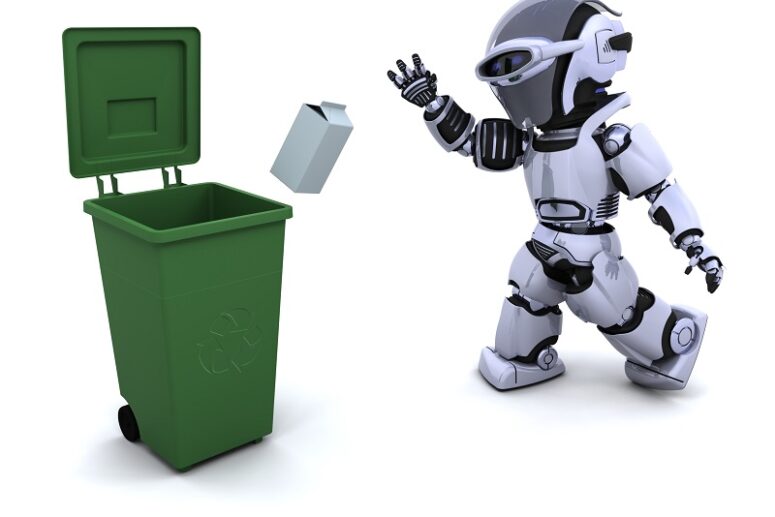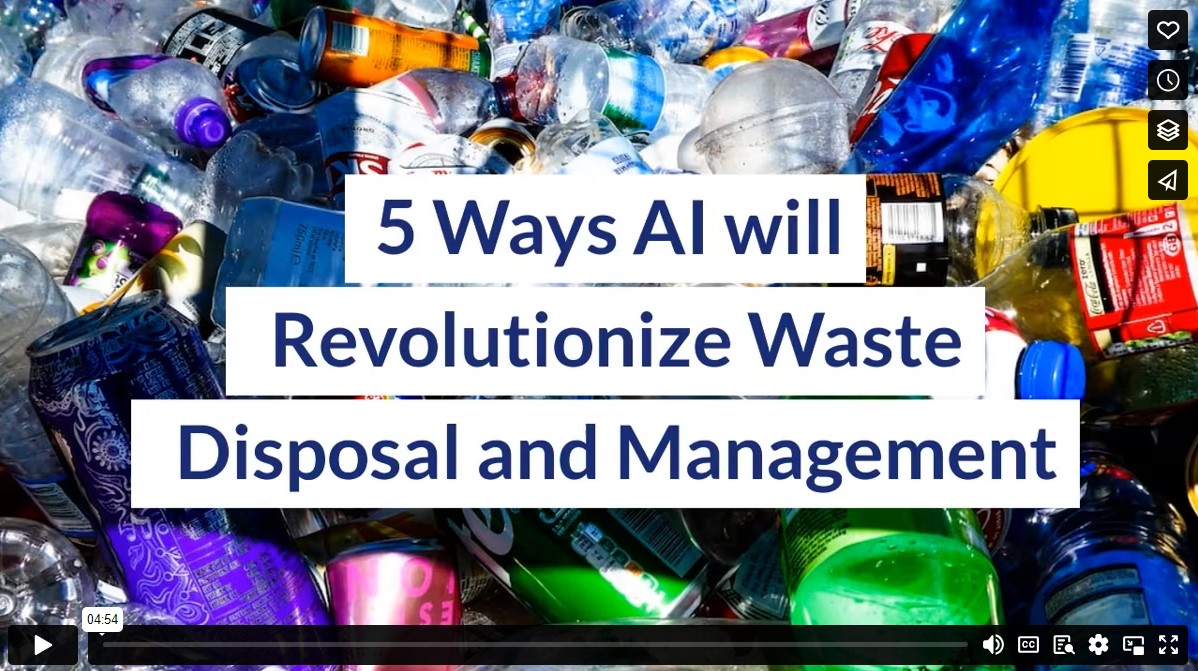
5 Ways AI will Revolutionize Waste Disposal and Management
AI is impacting all of us. With ChatGPT just over a year old, people are beginning to adapt to integrate large language models in their daily lives. Contrary to what dystopian movies might suggest, AI can be incredibly helpful in various industries and our everyday lives.
Waste disposal and management have become increasingly challenging and critical issues. With urbanization and population growth, waste systems are becoming overcrowded and more chaotic. There is a rising demand for efficient and sustainable waste solutions.
Enter artificial intelligence, the technology that could transform the way we manage waste. Let’s explore how AI can assist in waste disposal and management systems. Some of these applications, like recycling sorting, are already in practice and gaining popularity. Others, such as predictive maintenance, are likely to be implemented in the near future.
1. Automated Recycling
Automated recycling is one of AI’s most promising applications in waste management. Recycling facilities sort garbage by material, color, and size. Traditionally, this task is labor intensive. Labor costs are one of the major reasons recycling isn’t profitable in many places. AI machines can help by recognizing different trash types and automatically sorting them. Because it’s a machine, it can do this faster and for longer hours than a human can. Workers will still be needed to quality control the recyclables.
These robots use air pressure and automated arms to swiftly identify and separate various types of materials, including plastics, glass, paper, and metals. This automation not only accelerates the recycling process but also reduces contamination, ensuring that recyclables are of higher quality and more valuable in the recycling market.
2. Smart Disassembly Robots
Another application of this technology is the disassembly of complex electronics and other items. For instance, Apple Inc. launched Daisy in 2018, which can fully disassemble 23 different iPhone versions in a matter of seconds despite the intricate and fiddly nature of the process.
Similar AI-powered robots could assist in disassembling various challenging-to-dispose items, such as cars, laptops, and cameras. Many innovations, like plastics, contribute to the global waste management problem. Perhaps AI will reverse this trend, leading to innovations that reduce waste generation.
3. Predictive Maintenance for Waste Trucks
Waste collection trucks are the backbone of waste management systems. Ensuring their timely operation is crucial for maintaining cleanliness and efficiency in urban areas. AI-driven predictive maintenance can play a pivotal role in this regard. A malfunctioning garbage truck can cause significant disruptions in the carefully balanced waste flow within a city.
By equipping waste trucks with sensors that monitor their mechanical and operational health, AI algorithms can predict when tires are wearing out, hydraulics need servicing, and even when a truck is nearing full capacity.
4. Optimizing Waste Collection Routes and Driverless Pickup
Efficient route planning for waste collection is essential to reduce fuel consumption and minimize the environmental impact of waste management operations. AI-powered route optimization algorithms can analyze real-time data, such as traffic conditions and waste generation patterns, to create the most efficient collection schedules.
By minimizing travel time and fuel usage, these AI systems benefit the environment and lead to cost savings for waste management organizations. Additionally, they help alleviate traffic congestion in city streets, contributing to overall urban sustainability.
The future of garbage trucks is likely to involve self-driving vehicles. Once the self-driving technology, which is currently under development, has been tested and proven, it could revolutionize many sectors of the transportation industry.
5. Waste Monitoring and Reporting
Another area where AI can make a significant impact is in monitoring waste levels in containers and reporting when they need to be emptied. Smart sensors and cameras can be installed in waste bins to continuously monitor their fill levels. When a container reaches a certain threshold, an alert is sent to waste collection teams.
Currently, disposal companies often empty local dumpsters on a weekly or scheduled basis. AI-powered automated alerts would mean that bins are emptied precisely when needed, reducing unnecessary trash pickup.
Looking Forward
The possibilities of AI in waste management are limitless. AI continues to surprise and impress with its potential for creativity and efficiency. As we delve deeper into the world of AI, it becomes increasingly challenging to predict what the future will look like. Optimizing collection routes might seem as outdated as a Blackberry compared to a modern iPhone. Therefore, while AI is often associated with disaster scenarios, as depicted in the Pixar film WALL-E, it truly has the potential to make our waste management systems more sustainable, cost-effective, and environmentally friendly.
AI is poised to revolutionize waste disposal and management systems worldwide. With its ability to automate recycling, optimize waste collection routes, and monitor waste levels, AI is making the future of waste look hopeful. It can help cities be cleaner, more sustainable, and more efficient. As we look to the future, the potential of AI in waste management remains unpredictable, but it certainly offers exciting possibilities for a greener and cleaner world.
Video

